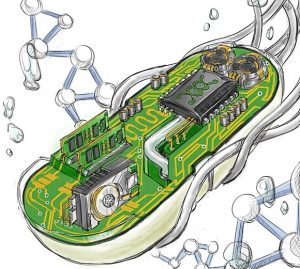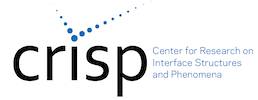Our kits are currently being reviewed and updated by a team of collaborative, innovative and interdisciplinary educators who wish to enhance the educational opportunities for students. These dedicated teachers are members of CRISP Collaborative Science for All (CCSA) as well as local educators.
Click to see the SCSU CRISP Module Template used by CCSA for improving and updating the CRISP demos and kits. Each kit page offers a CRISP developed teacher module and CRISP aligned standards (both NGSS and CCSS)
Kit Request form

Synthetic biologists solve problems by finding new ways to modify and reprogram living parts, almost as if they’re pieces of a tiny computer.
Synthetic biology uses the engineering design process. Researchers in this field design, build, and test new ideas to solve problems. Often, they use computer models to figure out what might (or did) happen. Inventing a superhero is just pretend. But giving special traits to a human being is a little bit like engineering an organism to do something new. It’s fun to imagine what key attributes a new organism would need in order to solve a problem—and it’s also important. We’ll need lots of different ideas to solve big problems, such as making food last longer, cleaning up an oil spill, or even terraforming Mars! Synthetic biologists must consider how new organisms will evolve and interact if they are introduced into the wild. Like all technologies, the products of synthetic biology have costs, risks, and benefits that could change our world.
Adapted from Building with Biology Toolkits originally created for NISEnet via the Building with Biology project
This material is based upon work supported by the National Science Foundation under Grant Number DRL 1421179. Any opinions, findings, and conclusions expressed in this material are those of the authors and do not necessarily reflect the views of the National Science Foundation.
Subject(s):
Synthetic Biology, Biotechnology
Objectives:
- Synthetic biologists solve problems by applying engineering principles to living materials.
- Synthetic biology uses the engineering design process.
- Synthetic biology is interconnected with society
Materials in this kit:
- Activity and facilitator guides
- Activity sign and holder
- Superhero worksheets
- Super Organisms worksheets
- Background art and holders
- Scissors
- Tape
- Markers
- Reference Sheet: Synthetic Biology
Suggestions for the Teacher:
Things to talk about:
- How is designing a superhero similar to or different from building a microorganism to solve a problem?
- What could happen if you let your super organism go in the wild? Could anything happen that you didn’t plan for?
Safety:
- Use caution when handling scissors
Additional Resources:
Super Organisms teacher module
BwB Worksheets
BwB Super Organisms Guide
BwB Super Organisms Facilitators Guide
Super Organisms CRISP aligned standards
Genetic Engineering Reference
Traditional Agricultural Breeding Reference
Synthetic Biology Reference
STEM Careers:
Agricultural and/or Food Scientist
Bio-engineer
Geneticist
Quality Control/Quality Assurance Technician
Research Scientist
Synthetic Biologist
Standards:
MS-LS1-2: From Molecules to Organisms: Structures and Processes
- Develop and use a model to describe the function of a cell as a whole and ways parts of cells contribute to the function.
HS-LS1-2: From Molecules to Organisms: Structures and Processes
- Develop and use a model to illustrate the hierarchical organization of interacting systems that provide specific functions within multicellular organisms.
MS - LS1.A: Structure and Function
- Within cells, special structures are responsible for particular functions, and the cell membrane forms the boundary that controls what enters and leaves the cell.
HS - LS1.A: Structure and Function
- Multicellular organisms have a hierarchical structural organization, in which any one system is made up of numerous parts and is itself a component of the next level.
CC 4 – Systems and Models
- Models (e.g., physical, mathematical, computer models) can be used to simulate systems and interactions—including energy, matter, and information flows—within and between systems at different scales.
CC 6 - Structure and Function
- Investigating or designing new systems or structures requires a detailed examination of the properties of different materials, the structures of different components, and connections of components to reveal its function and/or solve a problem.
Interdependence of Science, Engineering, and Technology
- Engineering advances have led to important discoveries in virtually every field of science, and scientific discoveries have led to the development of entire industries and engineered systems.
SEP 2 - Developing and Using Models
- Develop and use a model to describe phenomena.
SEP 5 - Constructing explanations (for science) and designing solutions (for engineering)
- Construct an explanation based on valid and reliable evidence obtained from a variety of sources (including students’ own investigations, models, theories, simulations, peer review) and the assumption that theories and laws that describe the natural world operate today as they did in the past and will continue to do so in the future.
Suggested Video(s):
Super Organisms from NISE Network on Vimeo.
